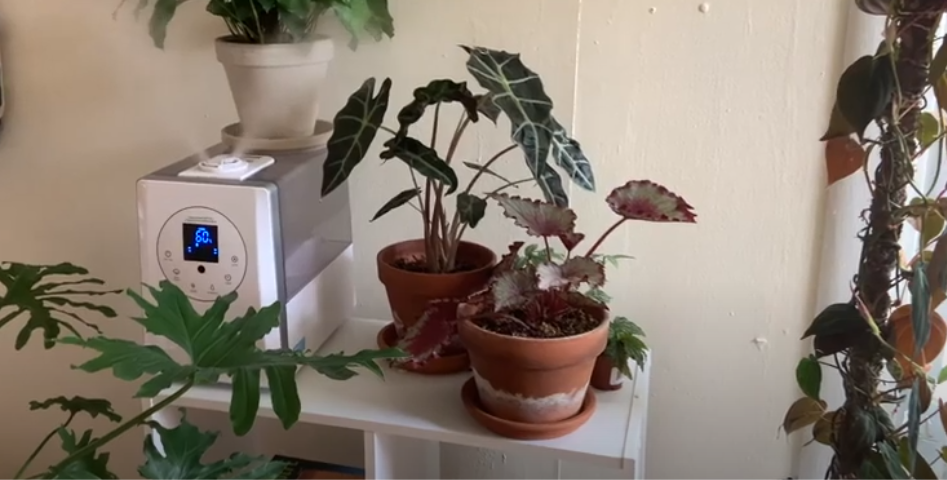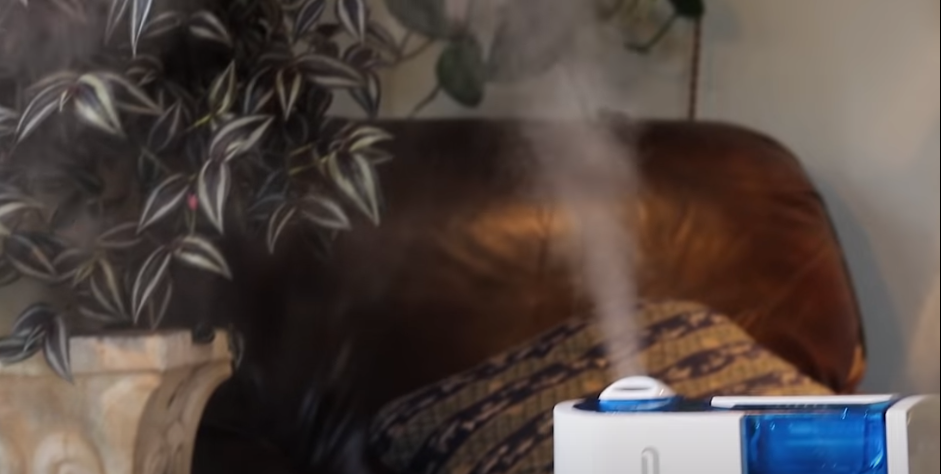
Humidifiers for Plants!
Humidifiers for Indoor Plants: will it really reduce the difficulty to keep your plants lively?
Plants are living creatures that entail water to survive. Gardeners often use a humidifier for plants to increase the humidity in the air around their plants.
This article is going to discuss the perfect using hours and systems of your humidifiers for indoor plants. If your main purpose is to use a humidifier for indoor plants only. Please go through the whole article for details.
Now, what about Humidifiers?
A humidifier is a device that helps to increase a specific area’s humidity. A humidifier does this activity by evaporating mist or water vapor in the air. And this moisture is very much important for your indoor plants to keep them moist, healthy, and looking alive.
If we focus on the tropical areas we can see that, their air quality is almost full of wetness. That’s why you can easily ignore these types of appliances to have extra humidity. But this type of healthy environment is rare in other parts of the world. So if you are a plant lover, especially an indoor plants lover there is no alternative to having a humidifier. Especially, if you are living in a dry area.
Most of the indoor plants are leafy plants or tropical plants that we love to keep. Because of this, a perfect humidity level is necessary to maintain the surrounding air of plants. 40% to 60% of humidity level is the perfect air quality for your indoor plants.
But don’t think that only the water vapor in the air or moist air can maintain your plant’s health. The majority of plants that demand more humidity also need higher temperatures. It means that the weather outdoors must be remarkably hot and sunny at the same time. And thus your indoor plants will give you a perfect look.
The top ten methods to utilize your indoor plants humidifier:
A humidifier can be a great way to improve the air quality in your home and help your plants thrive. But to have the proper benefit of a humidifier for your plants you should follow some steps. There are a few things to consider when choosing the placement, time, or ways of using your humidifier.
- Placement: Where should you place a humidifier for plants? If you use a portable humidifier, you can place it where ever you want. But do not place the unit too close to the plant. This can cause leaf damage from direct contact with water droplets.
- Direct Sunlight: It is not wise to keep your humidifier in direct sunlight. However, your indoor plants need direct sunlight but not your humidifier. So, you have to keep your humidifier aside from direct sunlight.
- Humidity Level: The level of humidity depends on your plant’s needs. If you are growing tropical plants that require high humidity, you will need to use a humidifier more. If you are growing desert plants that prefer lower humidity.
- Relative Humidifier: In general, it is best to use a humidifier when the relative humidity in your grow room drops below 50%. Once the relative humidity falls below 50%, your plants will start to experience stress and may stop growing. If the relative humidity gets too low (below 40%), your plants could die or dry.
So, how often should you use a humidifier for plants? The answer is, it depends. Use a humidifier as often as needed to keep the relative humidity in your grow room above 50%.
A cool mist humidifier is always ok with any type of plant. But though a warm mist humidifier releases warm mist then it’s better to place it a little bit far from your plants.
5. A humidifier according to room size: Humidifiers for plants come in different sizes and shapes. Some are small and you can place them on a shelf. While others are larger and you have to place them on the floor. There are also handled humidifiers, you can use that to mist plants directly. So, select the perfect one from the best humidifiers.
6. Cool mist or warm mist humidifier: Cool mist humidifiers and warm mist humidifiers add mist to the air to maintain the humidity level of a specific area. Both are good for maintaining the moisture level. But there are a few differences between them.
Once you’ve decided to use a humidifier, you must choose the right type for your plants. Since each has a unique set of advantages.
7. Improved Growth: Higher humidity levels can promote faster growth in plants. If you want your plants to grow quickly, a humidifier can help. And in that case, try to use small-sized humidifiers on a different corner according to your plant’s placement.
8. Flower to bloom: Many flowers require high humidity levels to open properly. So, for those plants try to place those plants near the humidifier. And it can help your flowers to bloom more beautifully.
9. Reduced Stress: Low humidity causes stress to your plants. This type of stress may cause dryness to your plants. A perfect humidifier can help your plants to come out from humidity stress and will keep them healthy.
10. Enhanced Nutrient Absorption: Moisture in the air helps plants to absorb nutrients more efficiently. If you want your plants to get the most out of their fertilizer, use a humidifier to mist the leaves regularly.
By following those tips, you can ensure that your plants get the humidity they need without causing any damage to your home.

Don’t Forget to Clean Your Humidifier Regularly to Have the Full Benefit.
Types of Humidifiers for Indoor Plants:
There are three main types of humidifiers for plants: evaporative, ultrasonic, and impeller.
- Evaporative humidifiers are the most common type. They use a wick to absorb water from a reservoir and release it into the air.
- Ultrasonic humidifiers are smaller and quieter than evaporative humidifiers. They use high-frequency sound waves to create a fine mist.
- Impeller humidifiers are the most powerful type of humidifier. They use a rotating disk to create a fine mist.
Besides those three parts, there are more differences between humidifiers,
- The most common type of humidifier is the central humidifier, which is built into the HVAC system of a home or office. Central humidifiers offer whole-house coverage and can be controlled via a thermostat.
- Another popular type of humidifier is the portable humidifier, which can be moved from room to room as needed. Portable humidifiers are often used in smaller spaces, such as a single room in a home or an office workspace. Some portable units even come with features like timers and auto shut-off, making them ideal for use in bedrooms or other rooms where someone might sleep.
Another question is, which type of humidifier is best: cool mist Vs warm mist for plants
In my view, a cool mist humidifier evaporates a natural mist in the air, not a warm or vaporized mist. I would like to use a cool mist humidifier for my plants.
Benefits of Increasing Humidity for Plants:
Greater humidity benefits indoor plants and there are various suggested methods to get this higher humidity. Some of these recommendations, such as misting and stone trays, have been utilized for years and are nevertheless suggested today.
But do they actually function? Are they helpful for houseplants and do they boost humidity? Our indoor air becomes dryer throughout the winter, which makes it more challenging for plants to grow. In the heat, the same thing might occur with air conditioning.
There are several benefits to using a humidifier for plants.
- First, it helps them to absorb more water through their leaves.
- Second, it prevents the leaves from drying out and becoming damaged.
- Third, it increases the overall humidity of the room, which can benefit both people and plants.
If you have houseplants, you may have considered using a humidifier to help them thrive. While there are some potential risks to using a humidifier with plants, there are also many benefits. By increasing the humidity around your plants, you can help them to grow and stay healthy.
Finally, the ‘best humidity level for plants’ is a great dilemma. Because it is very much dependent on a plants origin. Desert plant biology is very much different from rainforest plants. Generally, it is said that a 40% to 60% moisture level is much better for your indoor plants.
But don’t forget to keep your concerned eyes on your favorite plants. Less humidity will cause dryness to the plants on the other hand extra moisture will generate fungal attacks on the leaves and roots of those plants.
Hope you enjoyed the article. And if you are still reading don’t forget to give your expert opinion. Those will encourage us more.

It was quite helpful when you informed us that humidifiers help improve the air quality inside our homes, so they’re beneficial if we are growing indoor tropical plants that require higher humidity levels. I recently started collecting indoor plants at home, so I wanted to make sure they grow well and healthily since they make my place look livelier. I’ll keep this in mind while I look for an agricultural equipment supplier to get in touch with for the dry fog refrigeration my indoor plants need soon.
Hello, Elina Brooks,
It’s really nice to hear from you. Your reply inspired me a lot to write on this types of topic.
I will definitely let you know whenever I will write new content regarding your interest.
In the meantime you can read the blog on “best baby humidifier”. Though there are humidifiers of both warm mist and cool mist, you can select a cool mist humidifier from there for your indoor plants.
Finally, thanks for your nice review.